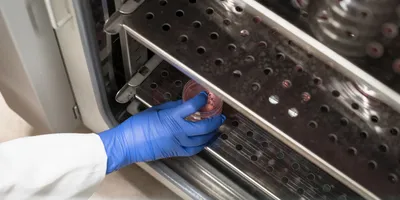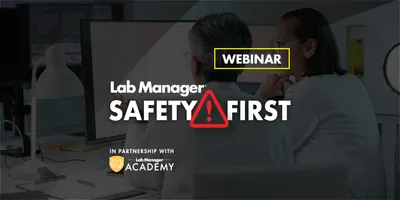
Lab ovens get used in many processes, often lasting for hours, which can add appeal to remote operation. Remote features are included with some ovens and some features can be added. Across this market, many options exist, but there’s room to grow in terms of use.
On some lab ovens, a scientist can use remote control to manage all of the options: from controlling the temperature and starting and stopping programs to logging data and setting up text alerts. Although labs of any size could benefit from an oven with remote control, Beran Peter, CEO of Associated Environmental Systems (Acton, MA), says, “Labs with large footprints typically require this type of oven so that the team using it can remotely monitor their tests without needing to walk across a large lab or even come into the office or lab.”
Adding options
Many lab ovens come with various options that can provide remote capabilities. As an example, Germany-based Memmert’s Universal Oven UN30 comes with a flexible Pt100 sensor and two more can be added. These sensors can be monitored with the company’s AtmoCONTROL software.
Related Guide: Lab Ovens Resource Guide
From Minneapolis, MN, where the winters can be brutal, Despatch makes lab ovens that scientists could control without leaving a cozy home. For instance, the company’s LAC benchtop oven can be operated with The Despatch Protocol Manager software, which allows remote computer operation and monitoring via RS485 communication. Just offering remote operations, though, doesn’t ensure that scientists will want them. As an example, scientists can purchase industrial test chambers—basically, superpowered lab ovens—from Dongguan Mentek Testing Equipment in Dongguan City, China, that come with a range of remote options. According to sales director Aiden Zeng, “All of our test chambers are available with remote operation and monitoring upon request, and this function is realized in three ways: an RS485 or RS232 communication port connected to a PC; an Ethernet connection to a PC; or a mobile app.” Despite that variety of ways to go remote, Zeng adds, “Currently, few customers request those options.”
Controlling the future
For some scientists, remote control of a heating device might lie ahead. In Gary, IN, for example, scientists and engineers at Chemcoaters develop economical and environmentally friendly coatings for steel surfaces. This company uses heating in various ways. Although Chemcoaters is not using remote control, new product development manager Brit Capizzano says, “We’ve been very interested in how companies monitor their ovens when off site.” Such remote capabilities could benefit Chemcoaters, which runs an agetesting box at about 38°C around the clock.
One option is upgrading an existing oven with a controller, such as an Internet of Things option from Engineering Product Sales Corp. (Santa Ana, CA). With this, many ovens can be controlled through a smartphone.
When asked what a customer should look for when shopping for a lab oven with remote control, Peter points out many things, but starts by asking: “Is there free and easy phone support for the life of the product?” He also encourages customers to look for ovens with “independent satisfaction ratings of products and service.”
Although some scientists might expect more maintenance on an oven with remote control, Peter says, that’s not typically the case. He adds, though, that an oven with “a Windows or Linux controller can need security patches and operating system updates.” Remotely controlling and monitoring a lab oven or other heating device can make life easier in labs and companies. So far, though, not all scientists seem convinced.










